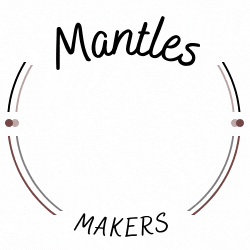Условия геймплея на реальные средства в интернет-казино с привилегиями
Игровой сайт Максбет игровые автоматы всегда доступен для заходов. Гости игрового портала способны просмотреть условиями и правилами проведения акций. Гостям доступны демо-слоты и безвозмездные игры на столе. Перейти на основной вебсайт Maxbet casino не требуя аккаунта в состоянии любой пользователь.
Целый диапазон предложений гемблинговой площадки доступен только зарегистрированным пользователям. Основное направление гемблингового времяпрепровождения в интернет-казино – сессия на настоящие деньги. Вследствие итоге регистрации аккаунта пользователь может включать аппараты платно, а после получения джекпотов запрашивать вывод средств. Выигранные средства выплачиваются на протяжении 10-40 мин..
Доступ игровому казино Максбетслотс официальный сайт
Гемблинг ресурс подготовлен принимать посетителей от разных стран. В некоторых зонах интернет-гейминг ограничен. Из-за этой причинности виртуальное игорное заведение может быть неработоспособно. Доступность платформы совершенно действительно восстановить даже при таких обстоятельствах. Если азартный сайт ограничен сетевыми провайдерами, преодолеть барьеры поможет работающее зеркало казино Maxbetslots casino.
Зеркальный портал – всесторонняя дубликат официального веб-сайта. Зеркала отличаются лишь доменами. Разработчики повторяющихся платформ целенаправленно вставляют в веб-адреса заменяющие значки. Модифицированные веб-доменные наименования не включены в список недопустимых гиперссылок. По указанной основе блоки на альтернативные сайты не применяются.
Минув запрет, пользователь доступается возможность ко всем функциям игорного заведения. Посетители дублирующих ресурсов имеют возможность:
- оформить учетную запись;
- пройти верификацию.
- перевести финансы на баланс;
- крутить в автоматы;
- принимать участие в акциях;
- активировать бонусы
- выводить выигрыши.
Возможности дополнительных сайтов ни в чем не проигрывает функциям основного интернет-проекта. Все возможности сертифицированного заведения предоставлены в полном размере. В таком рефлекторы оснащены единственной характеристикой. Текущие информация геймплейного полностью синхронизированы на всех зеркальных платформах.
Игрок сможет создать аккаунт на главном веб-сайте, а зайти в профиль через актуальное зеркало. При этом случае для входа требуется вводить логин и секретный ключ, которые геймер ввел в процессе регистрации. Начинающий сможет включить вступительный бонус на центральном портале, а развлекаться в виртуальном казино с бонусами на дублирующей площадке. Начисленные бонусные средства остаются на месте.
Функционирующие ссылки обеспечивают возможность доступа клуба, если существуют фильтры поставщиков интернета. Если препятствий нет, комфорт логина улучшает мобильная адаптация официального сайта. Ставки со телефона удобно и надежно.
Обзор мобильного казино Максбет игровые автоматы
Пользователям доступны два метода логина с телефона. Обладатели мобильных устройств либо гаджетов могут использовать браузерную версию а также инсталляционное ПО. Каждый из способа гарантируют быстрый доступ на каждое время дня и ночи.
Отличия в двумя вариантами замечаются только в подходе применения мобильной платформы. Веб версия главного портала не требует загрузки и инсталляции. Портативный сайт запускается без участия пользователя при посещении с любого безвозмездного интернет-обозревателя. Портативное софт необходимо скачать и инсталлировать на свой девайс.
Загружаемый клиент и веб вариант надежно действуют на многочисленных операционных системах. В преимущественно ситуаций гэмблеры выбирают устройствам Android и iOS. Отличие снова в подходе эксплуатации мобильной версии казино. В случае, если из веб-обозревателя возможно автоматически заходить с любой ОС, применение программы нуждается в скачивания разнообразных инсталляционных файлов. Игрокам предлагаются индивидуальные инсталяционные комплекты для Android и iOS.
Загрузочный файл для Андроид можно загрузить прямо на формальном веб-сайте клуба. Клиенту необходимо запустить каталог, а затем перейти в секцию «Мобильное приложение». Документ типа Apk можно получить безвозмездно. Установочный пакет для девайсов iPhone или iPad тоже предоставляется даром. Разница лишь в, что именно документ для iOS нужно будет загружать со страницах интернет-магазина App Store.
По завершении загрузочного процесса софта инструмент нужно поставить. Монтаж отнимает минимум минут. Для облегчения операции на портативной варианте веб-сайта есть пошаговая настройки на аппараты Android. Вследствие завершении удачной инсталляции на экране телефона отобразится ярлык приложения. Вход в игровой комнату будет производиться одним касанием этой иконки.
По набору критериев софт опережает мобильную вариант казино Максбетслотс официальный сайт. Основные плюсы инсталлируемого приложения:
- Механический обходной маневр блокировок.
- Эксклюзивные поощрения.
- Важная сохранение интернет-трафика.
- Вход к развлечениям без использования онлайн-соединения.
В софтвере есть особенный VPN-дополнение. Он способен автоматически искать рабочие запасные адреса. Плагин активируется без участия, когда поставщики интернета пытаются заблокировать доступность казино. После инсталляции программы гэмблер даже не обнаружит, что азартный ресурс попал под блокировку. Клиенту не требуется расходовать минуты на нахождение работоспособных URL-адресов.
Игра в интернет гэмблинге с премиями обеспечивает дополнительные средства. Бонусные вознаграждения могут быть использованы для платных ставок. Установка смартфонного приложения обеспечивает перспективу взять уникальные вознаграждения. Повторный подарок открывается по завершении загрузки приложения и логина в профиль.
Игровой процесс в приложении происходит с ощутимой сбережением интернет-трафика. Игрокам возможно сохранить, так как активация автоматов производится без использования браузера. Участвовать предстоит напрямую в софт. Так как в буфере приложения записываются сведения текущих игровых сессий, геймплей не завершается даже при коротком потере сетевого подключения к интернету.
Несмотря на множество достоинств софтвера часть пользователей выбирает веб-версии игорного заведения. Запускать в интернете с помощью интернет-обозреватель в ряде случаев удобнее, ведь не требуется устанавливать программу. Пользователи считают, что софт забирает избыточные мощности системы. Тем не менее инсталляция программы едва отражается на производительности смартфона или таблета.
Экранные компоненты мобильного приложения и браузерной версии идентичны. Обе площадки оснащены удобным и легким в использовании интерфейсом. Подбор нужного категории выполняется с помощью чувствительных к прикосновению клавиш смартфона. Сыграть в сети удобно на телефонах с всевозможными параметрами дисплеев. Материал автоматически подстраивается под все габариты дисплея.
На каком ресурсе найти действующие зеркала игорного заведения Maxbetslots casino?
В случае, если смартфонная редакция аутентичного интернет-ресурса загружается самостоятельно из любого обозревателя, в случае с зеркалами нужно отыскать действующую ссылку. Активный веб-адрес можно запросить, обратив внимание в службу поддержки игорного клуба. Круглосуточные операторы саппорта всегда готовы оказать поддержку в решении затруднений с доступностью ресурса.
Запрос в техническую поддержку – самый несложный и эффективный метод обрести новое зеркало. Однако пользователи не всегда могут обратиться к советами представителей саппорта. Временами у новичков в игре не имеется контактной информации службы поддержки. Либо гэмблер не в состоянии связаться с отделом клиентской поддержки. В таких случаях зеркала можно обнаружить, используя дополнительные источники нахождения:
- электронная рассылка сообщений онлайн казино;
- паблики соцсетей;
- специализированные сообщества
- веб-ресурсы аккредитованных союзников игорного заведения.
Уведомления по e-mail’у – один из самых достоверных методов. Извещения доставляются несколько раза за неделю. Электронная рассылка писем включает не лишь актуальные альтернативные ссылки. В мгновенных оповещениях размещаются информация о последних аппаратах и грядущих мероприятиях. Для того чтобы использовать почтовой рассылкой, необходимо активировать данную функцию. Оформить почтовые уведомления доступно немедленно по завершении регистрационного процесса.
Официальное игорное заведение Maxbetslots casino включает множество формальных групп в социальных медиа. Применяются преимущественно популярные соцсети и мессенджеры. Например, Facebook, Telegram, GMAIL, TikTok и прочие площадки. В частных группах обсуждаются разнообразные темы игровой тематики. Участники зачастую выкладывают линки на дублирующие веб-страницы казино.
Отыскать альтернативные ссылки также возможно на профильных форумах и особых порталах-обзорниках. Активные ссылки периодически размещаются влогерами. При поиска действующих запасных адресов советуется применять исключительно проверенные ресурсы. В интернете можно наткнуться на обманные сайты, которые проектируются с целью угона личной информации и финансовых ресурсов пользователей. Следовательно в периоде нахождения действующей ссылки необходимо быть предельно внимательным.
Альтернативный сайт казино: как делать ставки на деньги
Условия пари в денежном режиме на зеркальной платформе идентичны правилам основного ресурса. Новому игроку требуется создать аккаунт. Создание аккаунта отнимает пару минуток. Игроку необходимо открыть учетную страницу, внести данные в формуляр и утвердить операцию. Для комфорта гостей предоставлено 3 метода регистрации в казино Максбетслотс официальный сайт: соцсети, телефонный номер, электронная почта.
В случае, если у пользователя существует действующий учетная запись, следует войти. Игроку требуется нажать иконку «Вход», а затем в окнах появившейся страницы ввести имя пользователя и код доступа. Уполномоченный пользователь может делать пополнения используя подходящей финансовой системы.
Прежде чем определением способа платежей следует выяснить правила монетарного обслуживания. Рекомендуется учесть на пределы пополнений. Следует учесть как минимальный предел, так и верхнюю величину одного депозита. Платежные сервисы предлагают разные пределы взносов.
Кроме того необходимо выяснить вопрос существования или отсутствия дополнительных сборов. Отдельные транзакционные сервисы берут минимальные проценты с размера вклада. Всякие платежи со части официального казино не запланированы.
Во время увеличения счета более всего распространены пластиковые карточки и цифровые валютные транзакции. Темп внесения средств приблизительно равна. Депонированные средства появляются на счете игрока в пределах одной мгновения с момента одобрения платежа.
После пополнения аккаунта можно начинать делать денежным ставкам. Посетителю гэмблинг-клуба нужно выбрать однорукого бандита и активировать этот слот в режиме игры на деньги. Оплачиваемый режим пари активируется в итоге щелчка кнопки «Играть».
Полученные деньги выдаются без каких-либо отсрочек от имени игрового заведения. Вознаграждения осуществляются на пластиковую карту или криптовалютный кошелек. В ходе формирования запроса на получение нужно взять в расчет важное регламент азартного сайта. Переводы возможны на те же данные, с каких-либо делались вклады.
Как выбрать выгодный слот?
С целью выяснить прибыльность определенного игрового автомата, пользователи сравнивают некоторые параметров. Принимать во внимание важно такие базовые особенности игровых автоматов:
- коэффициент расчетного отдачи
- определение волатильности;
- шансы призовых комбинаций;
- лимиты бетов.
Уровень выплат (РТП) – один из очень ключевых характеристик сертифицированных слотов. Насколько больше показатель RTP (return to player), то выше шансов оказаться в выигрыше. Вращать на настоящие финансы рекомендуется в слоты с показателями возврата не меньше 94%-95%. В таком раскладе перевес игорного заведения будет достигать всего 5%-6%. Около 95% вложенных денег вернется геймерам.
В таком следует иметь в виду, что возврат распределяется наугад в числе некоторыми участниками геймплея. Видеослот может возвратить значительную долю затраченных средств как в течение 5-10 прокрутов, так и на протяжении продолжительной игры. Всё же, все равно лучше запускать онлайн в слоты с высокими показателями отдачи.
Изменчивость игрового автомата воздействует на несколько показателей. Из-за градации рискованности зависит частота появления дорогостоящих комбо. Насколько выше показатель нестабильности, то меньше образуются крупные джекпоты. Те пользователи, какие предпочитают забирать постоянные вознаграждения скромного размера, могут запускать автоматы с минимальным риском.
По причине уровня волатильности в значительной степени зависит величина наибольшего приза в одноруком бандите. В слотах с максимальным уровнем риска, наивысшие призы могут достигать значений x25 000-x50 000. Для видеослотов с малой волатильностью присущи на порядок скромнее показатели: x1000-x3000. Оптимальный выбор – однорукие бандиты со средним уровнем опасности. В этом сценарии большие и небольшие выигрыши появляются приблизительно с одинаковой периодичностью.
Начинающие в моменте выбора выгодного слота рассматривают пределы предлагаемых ставок. Для стартующих геймеров важно, чтобы игровая сессия тянулась наибольшее время. По этой причине новые игроки останавливаются на автоматы с маленьким уровнем минимальной ставки.
Профессиональные азартные игроки непременно учитывают наличие и доходность бонусов. Бонусные турниры начинаются по завершении выпадения определенного числа особых знаков. Премии могут включаться случайным способом. Кроме того встречаются аппараты с опцией покупки бесплатных вращений или различных наградных этапов.
Список игровых автоматов на зеркальной сайте
Коллекция азартных аттракционов на официальном ресурсе и альтернативных ресурсах совпадает. Список составляется из игр следующих типов:
- Традиционные издания.
- Современные 3D-слоты.
- Видеоигровые автоматы с кушами.
- Аварийные развлечения с мгновенными вознаграждениями.
- Игральные и табличные симуляторы.
На иному сайте можно развлекаться бесплатно. Деморежим имеется почти у всех у всех аппаратов барабанного типа. Демоверсии также предоставляются у игральных и табличных автоматов. В тестовом режиме возможно изучить с ассортиментом и протестировать ключевые характеристики слотов.
Живые игры с настоящими дилерами можно включать только в платном режиме. Иных вариантов нет, ведь игрокам противодействуют настоящие дилеры. Игрокам предоставляется исключительно лицензированный софт живого казино.
Порядка 70-75 процентов ассортимента гэмблинг-платформы Максбет игровые автоматы занимают традиционные слоты. Стандартный азартный машина состоит из следующих элементов:
- прямостоящие цилиндры;
- параллельные ряды
- линии выплат
- тематические иконки
- интерфейс управления.
Основная часть классических слотов разработано на платформе HTML5. С помощью данной технологии играть онлайн приятно с каждого мобильного телефона или таблета. HTML5-автоматы популярны, поскольку процент фанатов мобильных азартных игр неуклонно увеличивается.
На формальном сайте казино много обновлений. Недавно вышедшие варианты выделяются премиальной визуализацией и уникальным игровой механикой. В свежих слотах зачастую встречаются оригинальные плюшки и дополнительные опции. К возможность Bonus Buy или же Jackpot.
Последние пополнения добавляются в рубрику «Новинки». Чаще всего запрашиваемые версии оказываются в раздел «Топ». Настольные симуляторы добавлены в блок «Столы». Структурное распределение по категориям способствует оперативнее обнаружить соответствующую игру.
Любой нибудь входа не окажется выбран, клиенту гарантирован высококлассный сервис для азартных игр. Зайти на основной сайт можно с какого угодно гаджета (персональный компьютер, лэптоп, телефон, или планшет). Главное требование – наличие интернет-подключения. Когда основной сайт коротко недоступен, всегда можно воспользоваться действующим альтернативой казино. Адреса на зеркальные сайты предоставляются совершенно бесплатно.

